
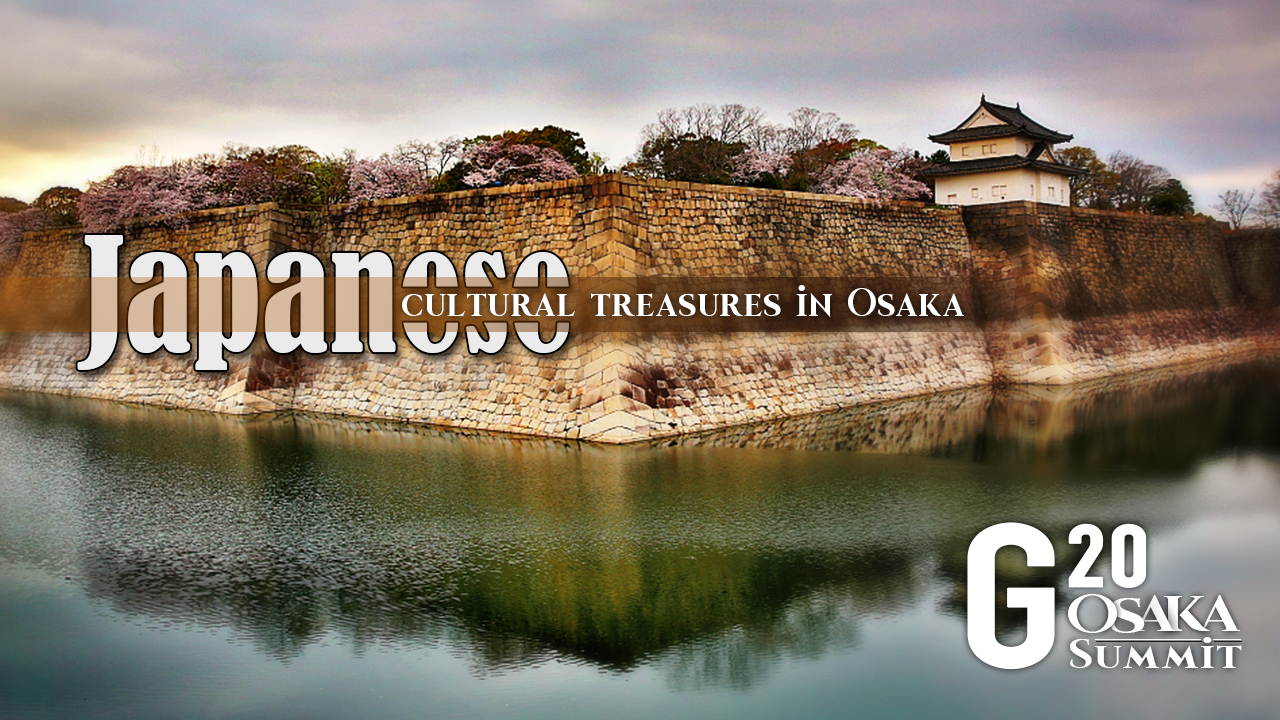
Boasting over 1,500 years of history and tradition, Osaka, one of Japan's largest cities, is more than just an economic center in the country's Kansai region. The city is also a genuine treasury of unique landmarks and sights.
From old towns and temples to performing arts and festivals, the city serves as a living museum, embracing rich cultural heritage, tangible and intangible alike.
The historical monuments and cultural establishments scattered across the city, as well as diverse carnivals and activities, display various facets of the traditional Japanese culture.
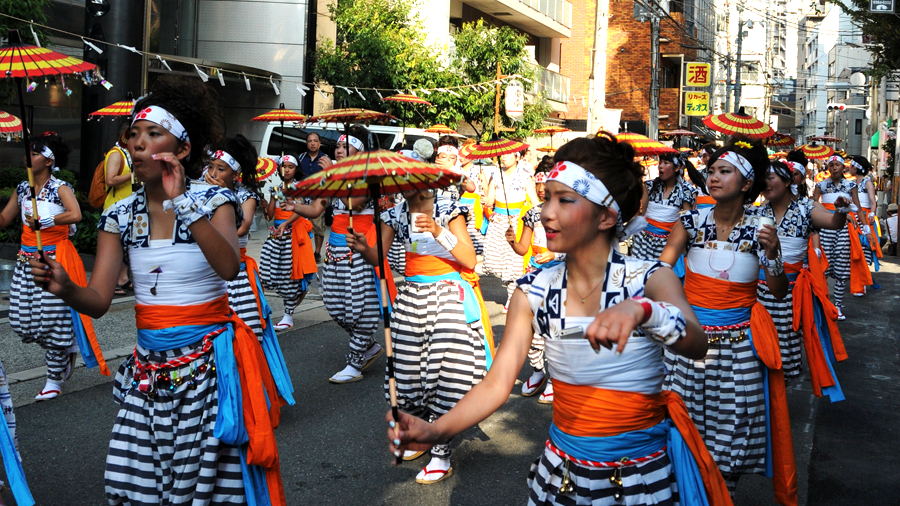
Umbrella dancers join in a land procession during the Tenjin Festival in Osaka, Japan, July 25, 2014. /Xinhua Photo
Below are the three most renowned traditional cultural treasures in Osaka that bring much flamboyance and vitality to this bustling port city.
Osaka Castle
Crisscrossed by rivers and canals, Osaka is known as the "city of water," where many places of interest and tourist attractions lie along the watercourses in the city.
Among them, the moat-enclosed fortress of Osaka Castle, situated at the center of the city, is by all means a must-see spot.
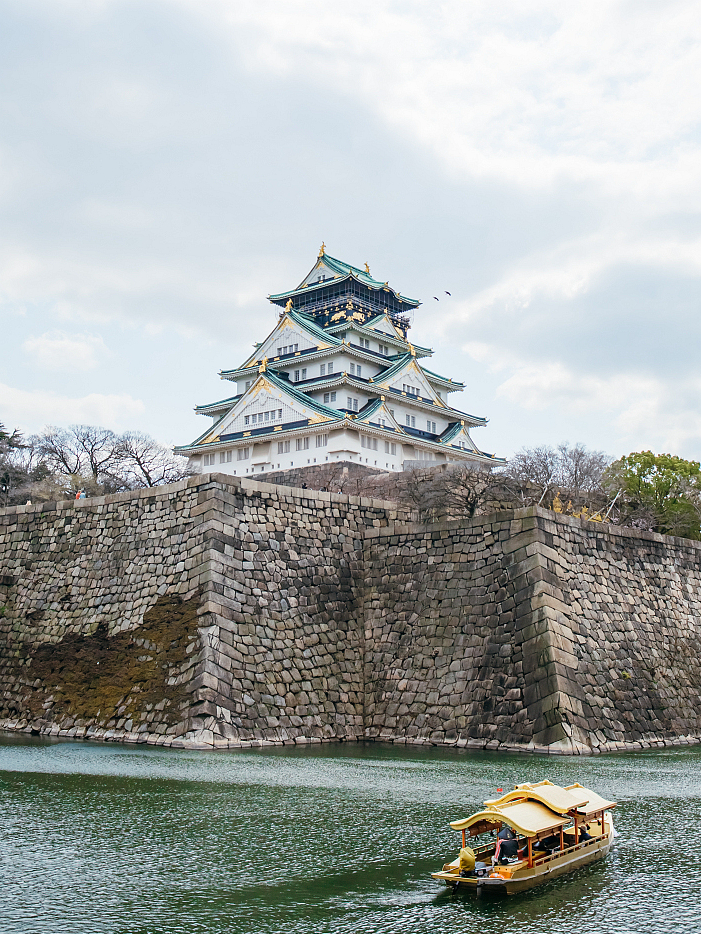
There are boats on the moat surrounding the Osaka Castle in Osaka, Japan, March 22, 2016. /VCG Photo
The castle is widely considered as one of the three most famous castles of the country, along with the Kumamoto and Nagoya castles.
With its origin dating back to 1583, Osaka's iconic symbol is a grand landmark of great historical value as it played a significant role in the unification of Japan during the Samurai era of the 16th century.
The castle spans some 61,000 square meters, containing 13 structures that are designated as "important cultural assets" by the Japanese government.
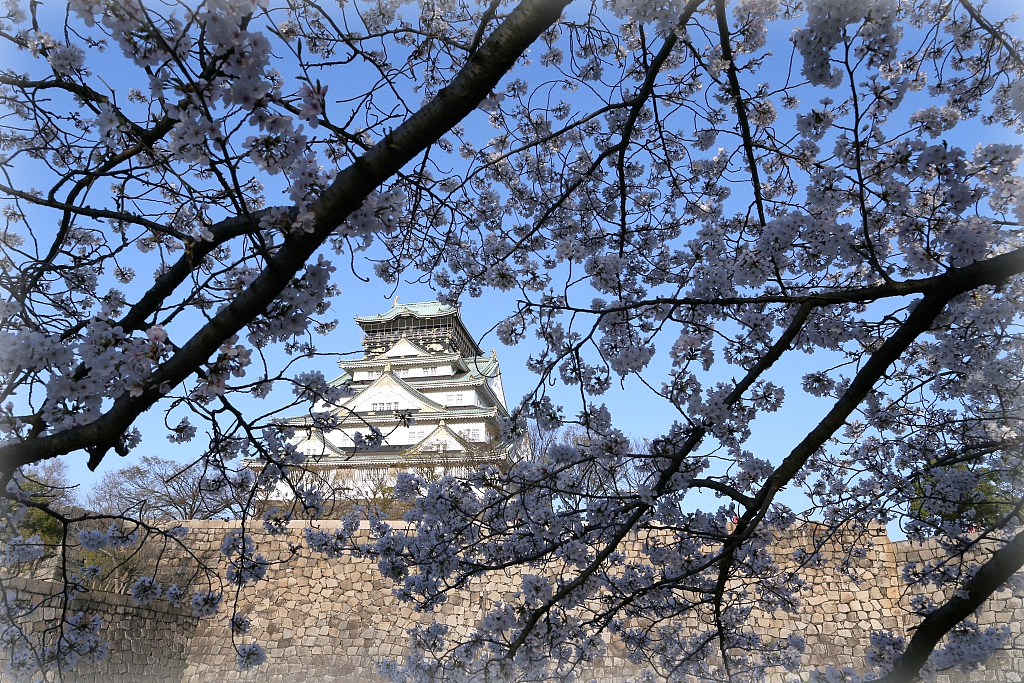
Osaka Castle is seen through cherry blossoms at Nishinomaru Garden in Osaka, Japan, March 28, 2018. /VCG Photo
The main tower of the castle, surrounded by a moat, is a five-story building named "Tenshu" built on a man-made stonewall, which was recognized as a Registered Tangible Cultural Property by the national government in 1997.
Currently, this central castle building is home to a great museum, showcasing numerous cultural relics and artifacts related to the history of the castle and Osaka's development.
Each year, this historical landmark draws a tremendous number of tourists, especially in the springtime, as its scenic gardens are of ultimate beauty during sakura blossom.
Bunraku Puppet Theater

Artists from the National Bunraku Theater of Japan rehearse a scene from "The Love Suicides at Sonezakui" at the City Center in New York, U.S., March 10, 1992. /AP Photo
Osaka has cultivated a vibrant arts culture, as typified by its famous Bunraku theaters. The city is considered to be a birthplace of this theater art trend.
Founded in Osaka in the late 16th century, Bunraku is a form of traditional Japanese puppet theater, which is one of Japan's most renowned performing arts in addition to the dance-drama Kabuki.
The traditional theatrical art, commonly known as "ningyo joruri" in Japan, combines chanting, shamisen music – traditional Japanese music played by a three-stringed instrument derived from the Chinese instrument "sanxian" – and puppets, offering viewers a distinctive aesthetic experience.
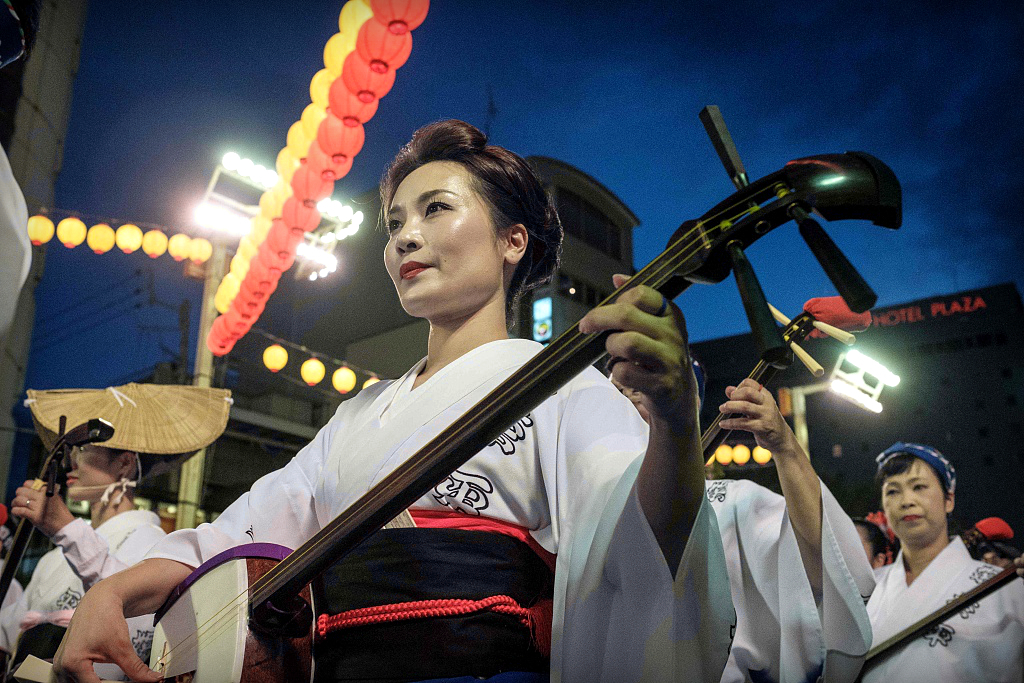
Performers play the shamisen, a three-stringed instrument, during the Awa Odori festival in Tokushima, Japan, August 13, 2017. /VCG Photo
Bunraku artists, puppet makers, theaters and companies have been defined by the government as "Living National Treasures," which refer to the cultural properties designated as the National Treasures under Japan's program for preserving its culture.
The time-honored stage art, which embraces sophisticated performance techniques, a unique nature of indigenous puppetry, as well as a vivid portrayal of human emotions, was inscribed on the list of World Intangible Cultural Heritage by UNESCO in 2003.
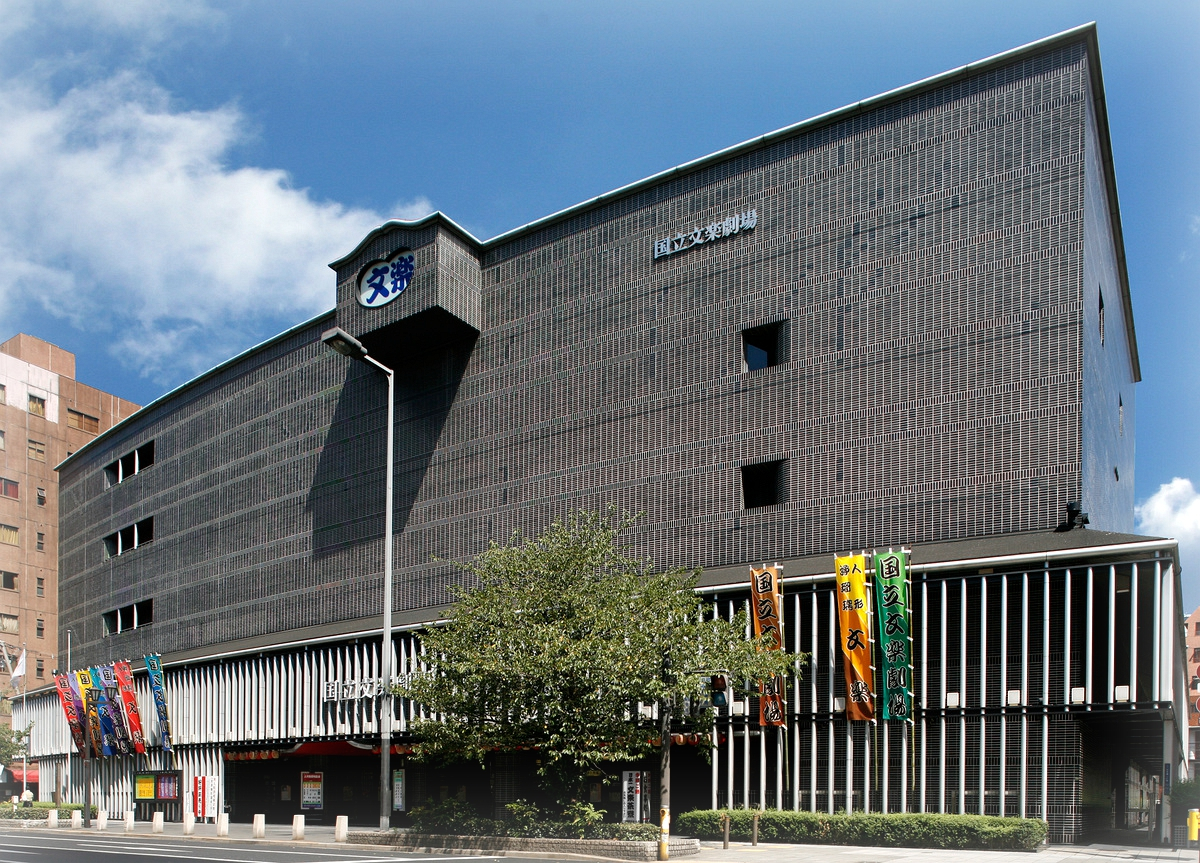
The National Bunraku Theater is located in Osaka, Japan. /Photo via Osaka-info
A visit to the Bunraku puppets theater will be a perfect blend of history with entertainment. Osaka is home to prestigious government-supported troupe at the National Bunraku Theater.
Opened in 1984, the theater serves as a base to preserve, develop and pass on the classical performing art. Besides the main theater, it houses a training institution and archives for historical material.
The theater stages five or more plays each year, combining modern technologies with the traditional characteristics of the Bunraku performance.
Tenjin Festival
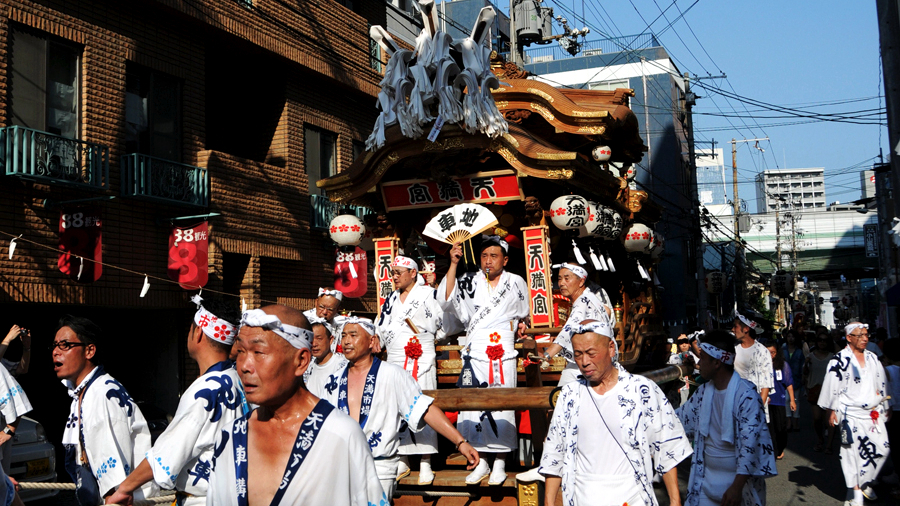
A land procession takes place during the Tenjin Festival in Osaka, Japan, July 25, 2014. /Xinhua Photo
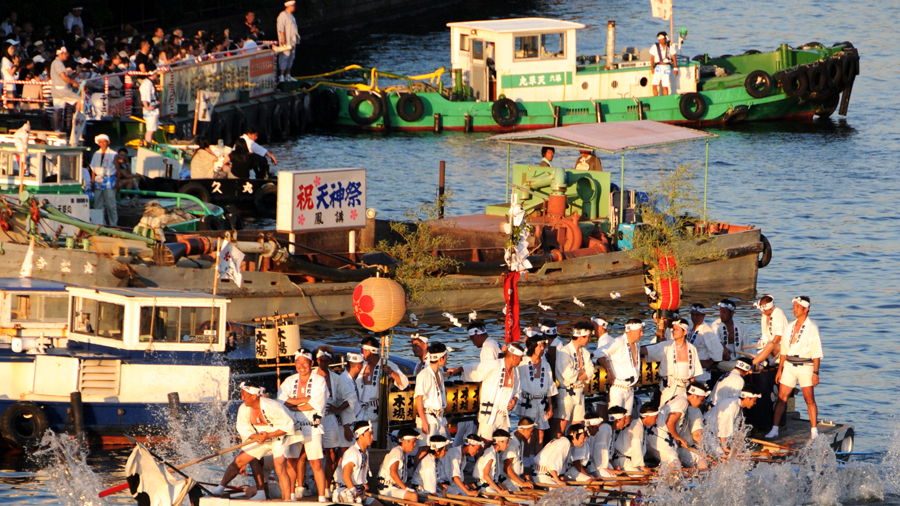
Boats participate in the river procession during the Tenjin Festival in Osaka, Japan, July 25, 2014. /Xinhua Photo
Osaka is also the host city of one of the country's largest festivals - the Tenjin Festival, which takes place on July 24-25 every year, drawing throngs of local people and foreign tourists in attendance.
The festival, named "Tenjin Matsuri" in Japanese, is hailed as one of Japan's top three festivals, along with Kyoto's Gion Matsuri and Tokyo's Kanda Matsuri.
In late July, across the city of Osaka is a general air of festivity and extravagance as numerous celebrations are held during the two-day carnival, including a land procession accompanied by festival music, lion and umbrella dancers, as well as a river procession immersed in the sound of drum beats.
It gives you a perfect reason to visit the western Japanese city in summertime with the night sky shining with bright fireworks.
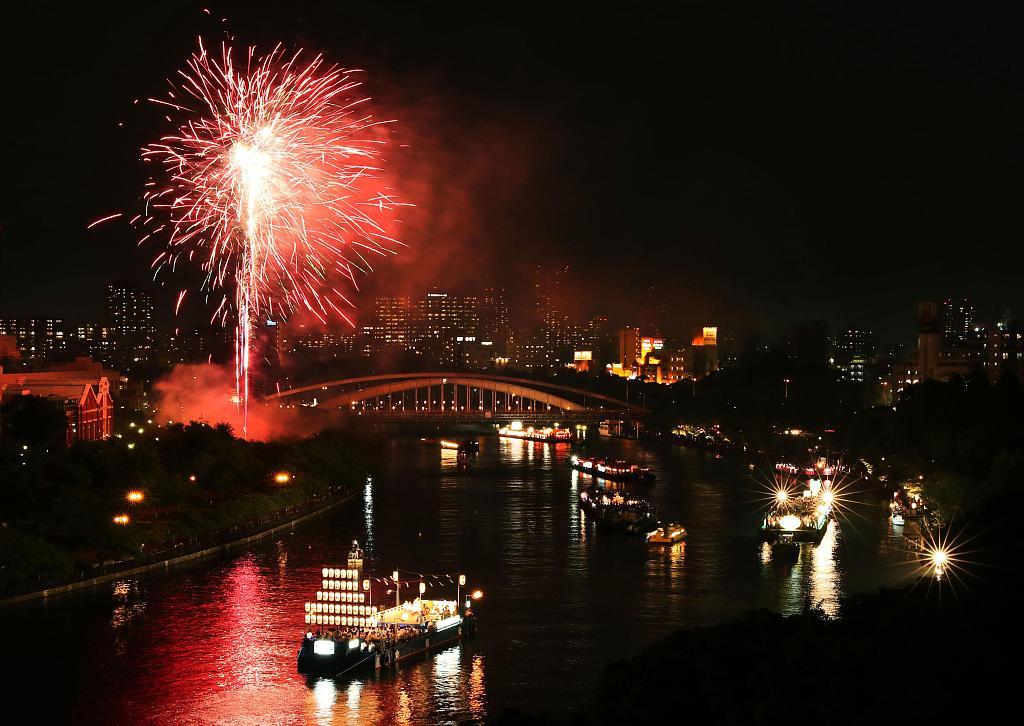
Traditional Funatogyo boat procession illuminated by fireworks during the Tenjin Matsuri summer festival in Osaka, Japan, July 25, 2017. /VCG Photo
Combined with the illuminated boats and their reflections off the river, the outstanding firework displays during the Tenjin Matsuri present a truly unique and stunning spectacle.
In addition to the colorful processions, much of the fun is also observed around the Tenmangu Shrine, where rituals and ceremonies are held in honor of its principle deity Sugawara Michizane – the deity of scholarship.
The annual festival has grown to become a window to local customs, traditional costumes, and the city's delightful hospitality.
(Cover image by Zhang Xuecheng)

Copyright © 2018 CGTN. Beijing ICP prepared NO.16065310-3
Copyright © 2018 CGTN. Beijing ICP prepared NO.16065310-3